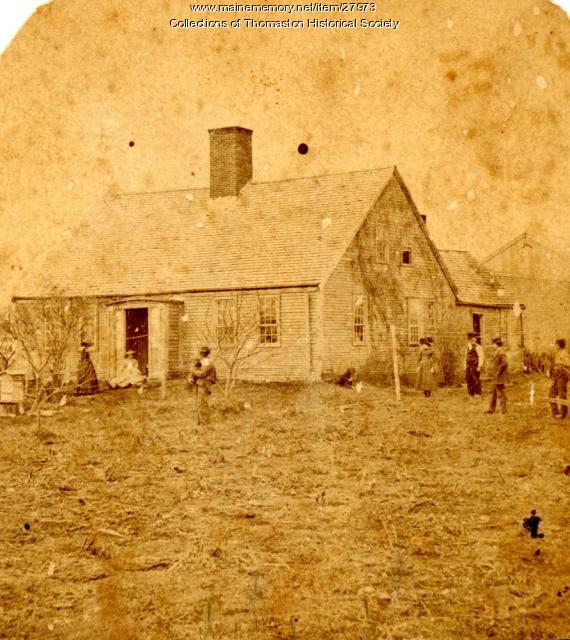Keywords: Alter
Item 105817
Altered mourning dress, Standish, ca. 1865
Contributed by: Maine Historical Society Date: circa 1865 Location: Standish Media: silk, cotton, linen
Item 7526
St. Andre's Church, Biddeford, ca. 1910
Contributed by: McArthur Public Library Date: circa 1910 Location: Biddeford Media: Photographic print
Item 86095
Whitney property, N. Side Lyndon Avenue, Peaks Island, Portland, 1924
Owner in 1924: Frederick T. Whitney Use: Summer Dwelling
Item 109228
Anchorage Hotel alterations, Old Town, 1946-1947
Contributed by: Maine Historical Society Date: 1946–1947 Location: Old Town Client: M. M. Hutchinson Architect: Eaton W. Tarbell
Item 110152
Portland Public Library alterations, Portland, 1927-1954
Contributed by: Maine Historical Society Date: 1927–1954 Location: Portland Client: City of Portland Architect: John Calvin Stevens John Howard Stevens Architects
Exhibit
Northern Threads: Adaptive reuse
A themed vignette within "Northern Threads Part I," featuring up-cycled and reused historic fabrics.
Exhibit
When Europeans arrived in North America and disrupted traditional Native American patterns of life, they also offered other opportunities: trade goods for furs. The fur trade had mixed results for the Wabanaki.
Site Page
Historic Clothing Collection - Fabric Adaptive Reuse
"… custom of either themselves or their dressmakers altering and updating existing garments to keep up with constantly changing fashion."
Site Page
Historic Clothing Collection - Eighteenth Century - Page 1 of 3
"By 1825, the dress was altered and re-constructed, perhaps as a costume (known at the time as "fancy dress") in homage to the Marquis, or as an early…"
Story
What does a warming climate mean for Maine?
by David Reidmiller
Climate change affects all aspects of life. What does this mean for Maine?
Story
Tapestry, Seine Twine and Burlesque
by Barbara Burns
My work as a tapestry artist and dancer in Maine.
Lesson Plan
Maine in the News: World War I Newspaper Project
Grade Level: 9-12
Content Area: Social Studies
This lesson plan is designed to introduce students to the important role that Maine played in World War I. Students will act as investigators in order to learn about the time period as well as the active role that Maine took on.
















